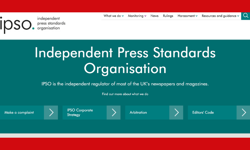In January 2009, in the face of changing consumer lifestyles and an increasingly multimedia world, the NRS needed to change, and fast.
"It had become disengaged from its users, having lost contact with sales people," he says bluntly. "It was technically-led, almost arcane. It had lost its position with media buyers and planners and into that void had stepped the ABC. Readership and circulation are complementary, but NRS' relevance had slipped. It needed to regain its context."
Too technical
The problem, he believes, stemmed from the NRS focusing too closely on the technicalities of the readership survey itself - a process in which a random sample of the British population are interviewed about their reading habits: in total, 36,000 interviews are undertaken each year - and not enough on communicating with the industry it served.
"When someone rang up with a query, it was like calling a technical help desk," Ironside observes. "It was run by researchers. It needed a client services focus."
Hardly surprising, then, that in recent years, NRS has taken a lot of flak. It attracted criticism from certain quarters that the survey was unwieldy, from others that it was not detailed enough and, specifically, that in London the sample size was too small. Yet, despite constantly evolving the survey - NRS' London sample size increased by 39% between 2005 and 2009, Ironside points out - the organisation struggled to effectively communicate its strengths so further contributing to perceptions of its declining relevance.
At first glance, Ironside says, he saw the role as "an interesting opportunity" and then, on closer inspection, "a unique challenge with a chance to create a real and lasting legacy".
Over a long career during which he has worked both for agencies and media owners, Ironside, an ex-sales director of the Daily Mail and former managing director of the Mail on Sunday, needed little convincing of NRS' value to the industry. Nor was there any doubt of his willingness to roll up his sleeves and get stuck in selling this to disgruntled stakeholders. But it's also clear that, with strategic management skills honed at Harvard Business School, he relished - and still does - the intellectual challenge of delivering the change required.
Ironside recalls his first few days in the job with a wry smile. "I decided to sit and look and listen for the first month," he explains. "But within 24 hours I was asking: Why do we send out blocks of paper results which no one can ever seem to find? People just weren’t using the hard copy results any more - they were using computer bureaux like Telmar. So we switched to online delivery via our new website which went live on September 28."
A fundamental challenge was the limited resources available to cover the cost of the changes required. The NRS is funded by three industry bodies - the Periodical Publishers Association (accounting for 44% of NRS' 'stakeholders'); the Newspaper Publishers Association (44%), and the Institute of Practitioners in Advertising (12%) - and as soon as money comes in, 75% goes straight out again to IPSOS, the firm which undertakes its readership research.
2009: a year of change
An initial review of the business resulted in a salary freeze and the decision to renegotiate the IPSOS contract ahead of its formal renewal; both resulted in cost savings. A decision was then taken to better capitalise on the commercial value of the survey base to third parties; the IPA became the first organisation to be charged to re-interview a sub sample of NRS interviewees who'd agreed to be re-contacted. Attention then switched to organisational structure and the survey itself.
The NRS board has been streamlined - from 15 members meeting monthly to six members meeting six times a year. A communications review led to a redesign of the website - including re-branding from NRS to National Readership Survey. PR consultancy Eulogy, which already worked with the ABC, was appointed to help distance both organisations from perceived rivalry and more effectively promote each as complementary to the other. A help desk was set up "to deepen the relationship" between NRS and its users. And a User Advisory Panel (UAP) was introduced.
"Previously, there had been no formal structure through which NRS could interact with its stakeholders," Ironside explains. "Such an interface was essential, however, to make sure NRS keeps pace with stakeholders' needs and gets feedback on new ideas." The new panel, a collection of representatives drawn from both the planning and buying sectors of the business, meets quarterly to discuss industry issues and proposed new developments under Chatham House rules. To further extend this new spirit of openness, highlights of UAP members' quarterly discussions will soon be detailed in a forum area on the NRS website.
The big unanswered question
Viewed in isolation, this list of achievements shows Ironside has much to congratulate himself on. But, in truth, the greatest challenge still lies ahead. For despite all the changes implemented so far, a giant elephant still squats in the corner at NRS HQ: the question of how best to evolve the survey from its traditional, offline focus to better reflect an increasingly online, cross-platform, multimedia world.
"My ambition is that NRS becomes a communication rather than just a readership survey," Ironside declares. "It has to evolve to measure cross-platform readership or it will end up being marginalised." Effecting this fundamental shift, however, is a major task.
The first step is to measure publishers' websites. The NRS has tried this before - as a paper-based extension of its existing survey - but it was not well-received because it was seen merely as an add-on, he explains. The fundamental question, then, is what's the best way to survey online readership. The answer is now being pursued through close and detailed consultation with NRS' stakeholders.
Lack of consensus on multiplatform approach
Ironside's first step was to oversee the development of a multiplatform approach to the survey. This was then discussed by the NRS's board, its technical committee and the UAP. There is now broad agreement by all that multiplatform has to be the way ahead. Yet to be finalised, however, is just how to do it and precisely what to measure,
"The variety of stakeholders we serve - ranging from sophisticated cross-platform players like Guardian Media who say include mobile, to independent offline publishers without even a website who fear asking about online readership might destabilise the offline data currently collected - is just one challenge," he explains.
Cultural differences are another. "Some more experienced in digital are less enthusiastic about the idea of digital research conducted by a 'traditional' player," he says. Then there's the issue of just what to measure - recall, or something else. "Lots of publishers and agencies seem interested in engagement, involvement, trust in the brand and perceptions of honesty online but you've got to ask: just how do you use that as a trading metric which is, after all, what all this should be about."
One way forward is to develop a self-completion online questionnaire with participation incentivised - an approach which has been used with varying degrees of success in a number of other countries. Also being explored is the potential to fuse NRS with an existing online measurement system, such as those operated by Nielsen or comScore.
“A fantastic opportunity”
All of which sounds pretty inconclusive, yet Ironside is pleased with progress so far and confident a solution can be agreed and implemented as soon as 2011. "We have a fantastic opportunity to integrate an on and offline survey that would meet each of the individual needs of our users within a deliverable time frame and budget and I have total confidence we can achieve this," he says.
"Before I started this job, everyone warned me how political it would be juggling the interests of different newspapers and magazines, but the one good thing about the past year has been that everyone has been so focused on their own day-to-day business, there has been less attention paid to industry in-fighting."
Needless to say, Ironside also has total confidence in the knock-on effect achieving his goal would have for beleaguered newspaper and magazine sales teams battling to stay afloat in the face of ongoing economic recession. "It is, of course, very hard for sales teams in the current climate. But it is also difficult because of all the talk about selling through the line when in actual fact on a day-to-day basis, pretty much everything remains silo-based," he observes.
"I can go into a single building and find different views from sales teams on different floors. What's certain, though, is that it is now more important than ever to build quality into the sales proposition - which is where NRS comes in - otherwise the circulation of the Star equals the circulation of the Times which is simply not the case. As stakeholder focus on quality of readership grows, so must our ability to deliver data appropriate to meet this need."
In five years’ time, Ironside adds, NRS must be profitable with rising revenues, intimately engaged and responsive to its users, and broader in scope and relevance than it is today. As for his involvement with it, well, that remains to be seen. "Once we have created a communications survey, maybe then will be the right time for me to go," he muses.
"But then again, who knows? I always planned to do this only so long as I am enjoying it and at the moment I really am enjoying it very, very much."










